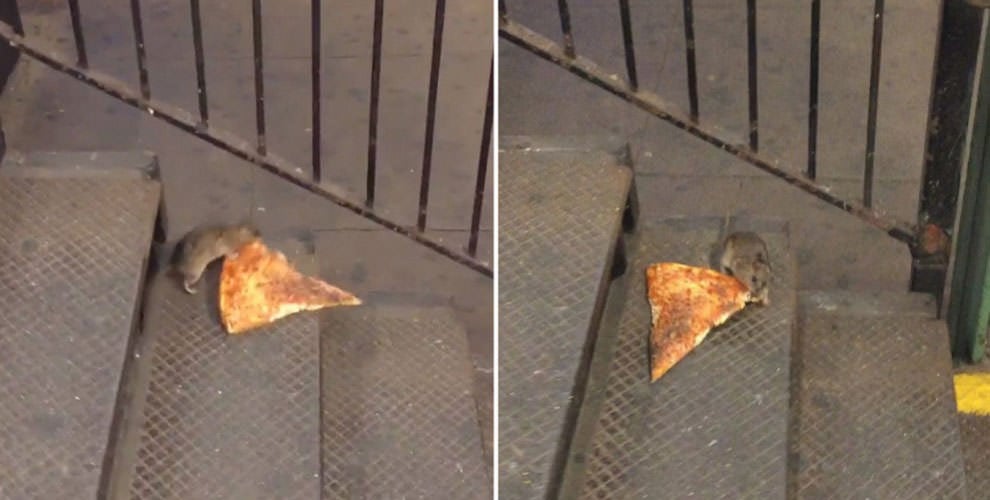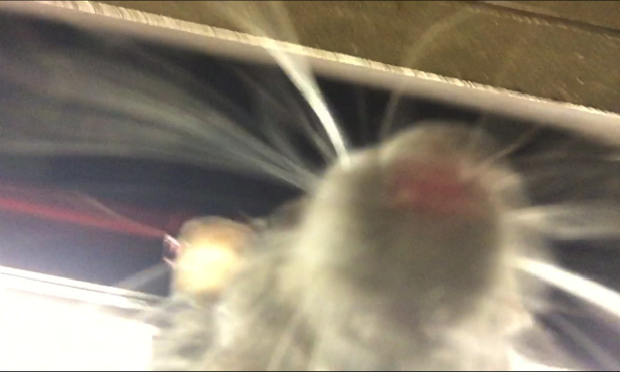Art World
Was Pizza Rat All an Elaborate Performance Art Hoax?
The performance artist calls her movement Zardulism.

The performance artist calls her movement Zardulism.

Sarah Cascone

One of 2015’s most memorable Internet stars was a humble rat, who stole a slice of pizza and, in the process, America’s heart. But was Pizza Rat all a sham, a clever ploy cooked up by a Brooklyn-based performance artist? John Del Signore at Gothamist recently aired doubts about the popular video’s authenticity.
This past September, Matt Little shot a short video of an intrepid rat dragging a mammoth slice of pizza down the stairs on a subway platform. The footage was explosively popular (nearly 9 million views to date), and spawned at least two computer games, a remote-controlled knock-off, and even an appearance on SNL with Miley Cyrus.
The Pizza Rat sensation even spilled over into the art world, with artist Tina Trachtenburg creating a plush sculpture of the scrappy rodent, which managed to make the list of artnet News’ art-inspired Halloween costumes. At the time, we thought it was a bit of a stretch, but it seems Pizza Rat’s inclusion on such a list may have been more fitting than we knew.

Tina Trachtenburg, Plush Pizza Rat.
Photo: Twitter/ @motherpigeon.
Actor and Upright Citizens Brigade (UCB) comedian Eric Yearwood has admitted to having been recruited by a performance artist named Zardulu to appear in Selfie Rat, a similar viral video in which a rat crawls on a man asleep on the subway platform, somehow managing to snap a quick selfie along the way. (Unlike Pizza Rat, Selfie Rat was almost immediately met with suspicion.)
An anonymous UCB member apparently corroborated Yearwood’s tale, telling Gothamist that Zardulu “makes these fake scenarios, releases them as real through news, social media and whatever else. Many have been HUGE stories. Weirdest part is that she never comes forward or capitalizes on them whatsoever.” He believes that Zardulu is responsible for the recent spate of viral rat videos, and claims that she told him a year ago that she was training rats.
Zardulu was less forthcoming. “I’m not interested in an interview and I’m not interested in the story,” she wrote in an e-mail to Gothamist. “Why wake the world from a beautiful dream when the waking world is all so drab?”

Zardulu, Selfie Rat.
If the story is true, Zardulu would be following in the footsteps of artists like Cai Guo-Qiang. In 2014, he strapped iPads to three African Sulcata tortoises, which were free to wander around the Aspen Art Museum. After a public outcry, the museum removed the tortoises from an enclosure on the roof.
The artist’s Facebook page reveals little information. Zardulu calls herself a “mythmaker” and includes links to two historical hoaxes, the plan to saw a sinking Manhattan in half, and the Cardiff Giant.
In a Facebook message to artnet News, she wrote, “I have researched the art form of urban legend to great lengths and have found it doesn’t even have a name. So, I call my work Zardulism and consider myself a Zardulist. I hope to inspire other artists to create their own works of Zardulism.”
These statements echo the sentiments of art vandal Vladimir Umanets, who defaced Mark Rothko’s painting Black on Maroon in 2012, and introduced the art movement known as Yellowism into the cultural lexicon. However, he later penned an article in the Guardian expressing regret for his actions.
In her message, Zardulu wote that “creating an urban legend often requires mastery of storytelling, acting, directing, photography, painting, sculpting and more. I can’t fail to mention that these are often created by common folk, creative expression[s] of outsider artists.”
“I don’t wish to discuss specific pieces or their significance for me,” she added. “I’d rather people ask themselves those questions. We’re told what to think far too often already.”
Though Zardulu’s still not officially taking credit, the myth of PizzaRat certainly seems right up her alley. “One day modern mythmaking will be recognized as the art form it is,” Zardulu insisted. “It certainly has time on its side, because myths are the only art that is eternal.”
Who is Zardulu, and what will she do next?